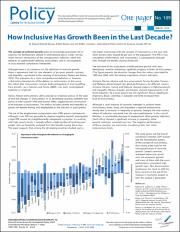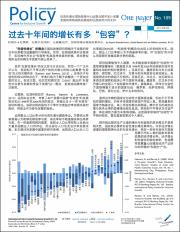Please use this identifier to cite or link to this item:
https://repositorio.ipea.gov.br/handle/11058/15390Files in This Item:
| File | Description | Size | Format | |
|---|---|---|---|---|
| en_IPCOnePager189.pdf | 89.87 kB | Adobe PDF |  View/Open | |
| zh-hans_OP189CH_How_Inclusive_Has_Growth_Been_in_the_Last_Decade.pdf | 465.33 kB | Adobe PDF |  View/Open |
| Title: | How Inclusive Has Growth Been in the Last Decade? |
| Other Titles: | How Inclusive Has Growth Been in the Last Decade? |
| Authors: | Ramos, Raquel Almeida Ranieri, Rafael Lammes, Jan-Willem |
| Abstract: | The concept of inclusive growth plays an increasingly prominent role in steering the development debate in international policy circles. Yet the initial intrinsic obviousness of the concept proves fallacious when one embarks on operationally ddefining ‘inclusiveness’ and its consequences in cross-national comparative frameworks. Although there is no consensus on the definition of inclusive growth, there is agreement that the core elements of pro-poor growth—poverty and inequality—are central to the meaning of inclusiveness (Ranieri and Ramos, 2013). The aspiration for a more comprehensive definition is, however, a distinctive characteristic of the debate on inclusiveness. In this sense, the notion that inclusiveness involves both participating in and benefiting from growth—as in Kakwani and Pernia (2000)—has been contemplated explicitly or implicitly. (…) |
| metadata.dc.rights.holder: | International Policy Centre for Inclusive Growth United Nations Development Programme |
| metadata.dc.rights.license: | O texto e dados desta publicação podem ser reproduzidos desde que as fontes sejam citadas. Reproduções com fins comerciais são proibidas. |
| metadata.dc.type: | One Pager |
| Appears in Collections: | Publicações do IPC-IG |
Items in DSpace are protected by copyright, with all rights reserved, unless otherwise indicated.

